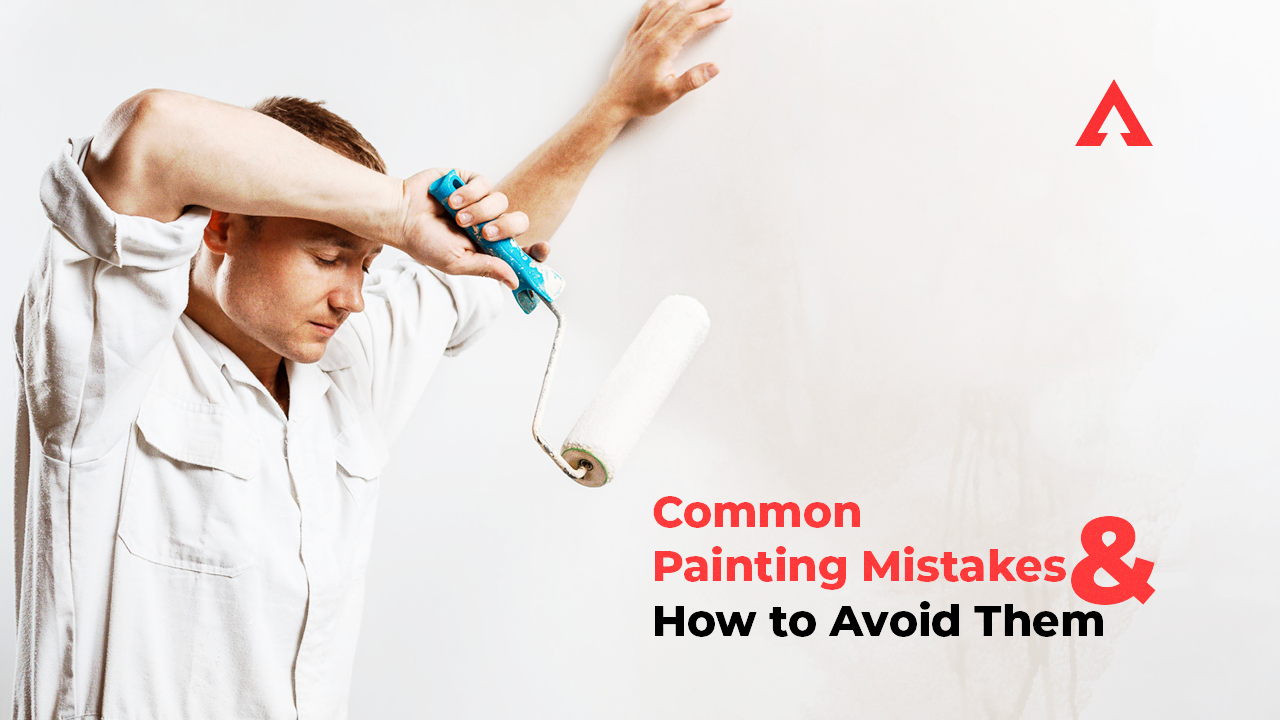Tue, Oct 22, 2024
Read in 5 minutes
Painting your home can be a satisfying and transformative project. Whether you're engaging in residential painting yourself or hiring home painting services, knowing how to avoid common painting mistakes is crucial. This guide will walk you through these common pitfalls and offer practical tips on how to paint a wall effectively, ensuring a professional finish.

Painting mistakes can turn what should be a straightforward job into a frustrating ordeal. These mistakes can lead to poor results, wasted time, and additional costs. Understanding and avoiding these mistakes will help you achieve a beautiful, long-lasting finish whether you’re doing house painting yourself or overseeing the work.
Mistake - Skipping Surface Cleaning
One of the most common mistakes in house painting is skipping surface cleaning. Dirt, dust, and grease can prevent paint from adhering properly to the wall.
Why Cleaning is Crucial:
How to Clean Surfaces Properly:
Mistake - Ignoring Primer
Primer is essential in preparing your walls for painting. It helps the paint adhere better and creates a smooth base.
Why Primer is Essential:
How to Choose the Right Primer:
Mistake - Not Testing Paint Colors
Choosing the right type of paint and color without testing can lead to disappointing results.
Importance of Testing Paint Samples:
How to Properly Test Colors:
Mistake - Using Low-Quality Paint
Using low-quality paint may seem like a cost-saving measure, but it often leads to poor results and more work in the long run.
Long-Term Benefits of Investing in Quality Paint:
Mistake - Using the Wrong Tools
Using the right tools is critical in achieving a smooth and even finish.
Importance of Selecting the Right Brushes and Rollers:
Guide to Choosing the Appropriate Tools:
Mistake - Overloading the Brush or Roller
Applying too much paint at once is a common mistake that leads to drips and uneven coverage.
Consequences of Overloading Paint Tools:
Techniques for Loading Brushes and Rollers Correctly:
Mistake - Poor Brushing and Rolling Techniques
Proper techniques in applying paint can make a significant difference in the final outcome.
Common Mistakes in Applying Paint:
Proper Techniques for Even Application:
Mistake - Not Allowing Enough Drying Time
Rushing through the drying process can compromise the quality of your paint job.
Importance of Adhering to Drying Times Between Coats:
Tips for Ensuring Adequate Drying Time:
Mistake - Painting in Poor Conditions
The environment in which you paint can significantly impact the result.
How Temperature and Humidity Affect Paint Drying:
Best Practices for Choosing the Right Conditions for Painting:
Mistake - Skipping the Cleanup
Proper cleanup is essential for maintaining your painting tools and ensuring a neat finish.
Importance of Cleaning Tools and Work Area:
How to Properly Clean and Store Painting Tools:
Mistake - Ignoring Final Touch-Ups
Final touch-ups are crucial for a professional-looking finish.
How to Inspect for and Fix Imperfections After Painting:
Tips for Achieving a Professional Finish:
Painting your home can be a rewarding project if done correctly. By avoiding common mistakes and following these best practices, you can achieve a professional finish that enhances the beauty of your home. Whether you’re learning how to paint a wall for the first time or looking to improve your house painting techniques, these tips will help you get the best results.
Investing time in proper preparation, using high-quality materials, and employing the right techniques will save you from frustration and ensure your residential painting project is a success. If the task seems daunting, consider hiring home painting services to achieve the best outcome.